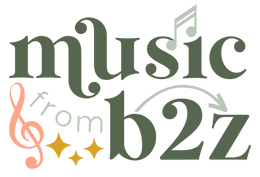
You’ve finished your instrument families unit. Your kids can finally tell the difference between a trumpet and a trombone, and most of them have stopped calling every instrument a flute. It’s time to wrap things up in a way that isn’t another worksheet or one more video.
✨ This is the perfect moment to run centers. ✨
Instrument family centers are hands-on, student-led, and a low-stress way to review everything you just taught. If you’ve never run music centers before, don’t panic — you don’t need anything fancy. Just a plan, a few stations, and the ability to pretend you don’t hear the volume level creeping up every five minutes. You’ve got this.
🎯 Why Centers Just Work
Centers are golden because:
-
Your students get to move, interact, and talk about music — instead of just sitting and listening.
-
You can check for understanding without turning it into a big “test” moment.
-
You don’t have to lead every second. Just float around, redirect, and sip your room-temp coffee while they do the work.
They’re especially perfect at the end of your instrument family unit — after students have learned about each group and heard the instruments in context.

🛠️ How to Set Up Centers Without Overcomplicating It
Start with three to five stations — just enough to keep kids engaged without turning your room into a zoo. Decide how they’ll rotate: set a timer, use a music cue, or just call it out when it’s time.
Keep groups small and intentional. If you know certain combos are a recipe for chaos, don’t do it to yourself. Give each group a materials manager to handle setup and cleanup so you’re not running from table to table like a headless chicken.
Before you start, set expectations clearly. Go over voice levels, how to transition, what to do if they finish early, and—this one’s big—don’t touch another group’s stuff.
With the right structure, centers basically run themselves.
🎵 Easy Instrument Family Stations
Here are a few of my favorites — and yes, they’re all part of my Instrument Family Unit, so if you want to just print and go, that’s an option too.
1. Memory Game
Students match instruments to their families. You can run it as a traditional memory match or make it speed-round style for extra energy.
2. Instrument Puzzles
Printable puzzles where students connect instrument names or pictures to the correct family. Bonus: it’s quiet and oddly calming.
3. Write the Room
Post instrument cards around the room. Students walk around, find them, and record which family each one belongs to. It gets them moving, which keeps them focused longer.
4. Bingo
A classic. Call out instruments or families, and students mark them off.
If you want to throw in an iPad video station or some coloring sheets for early finishers, do it. But honestly, the four above are enough to make it solid.

💡 A Few Tips So You Don’t Lose It Mid-Rotation
-
Rotate every 7–10 minutes depending on your class. Shorter for younger kids.
-
Use a big countdown timer if visuals help keep your class on track.
-
Always model the expectations — even if you feel like a broken record.
-
Keep everything in bins or folders so transitions are quick and painless.
🎻 Want to Make This 100x Easier?
If you’re thinking “This sounds great but I don’t have time to make puzzles and memory cards from scratch,” friend — I already did it for you.
My Instrument Family Unit includes everything you need to teach the families and run an engaging, low-stress station day at the end. Memory game, puzzles, write the room, bingo — it’s all included and ready to go.
It’s a full unit that ends with centers you can use as review, assessment, or just a way to survive the last class before break.


